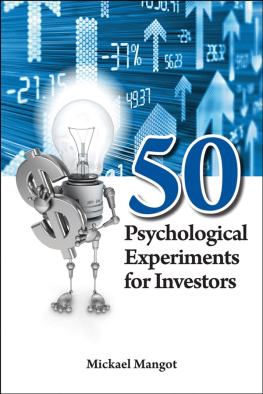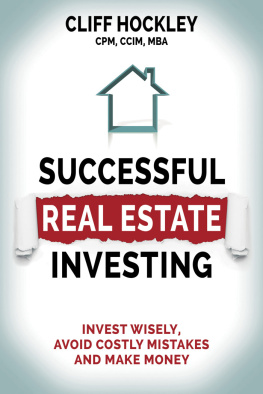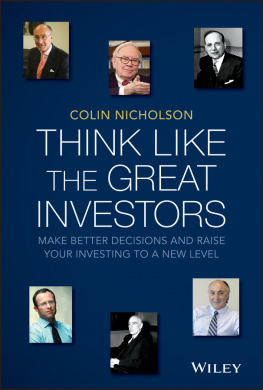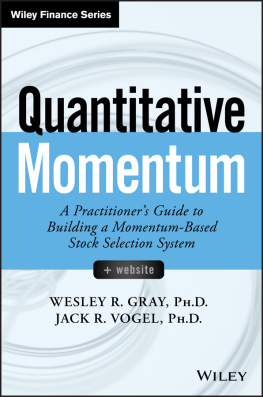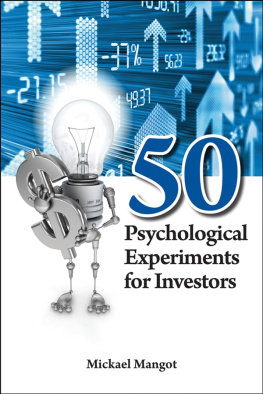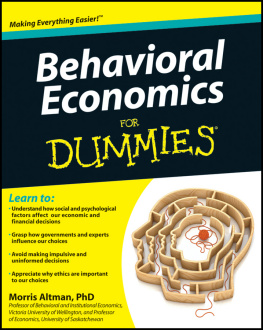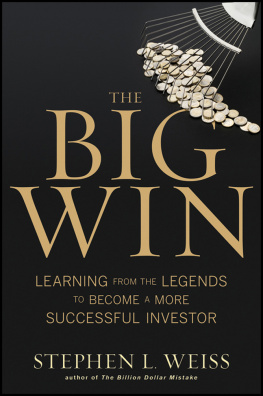
Copyright Dunod, Paris 2007
Published in 2009 by John Wiley & Sons (Asia) Pte. Ltd.
2 Clementi Loop, #02-01, Singapore 129809
All rights reserved.
No part of this publication may be reproduced, stored in a retrieval system, or transmitted in any form or by any means, electronic, mechanical, photocopying, recording, scanning, or otherwise, except as expressly permitted by law, without either the prior written permission of the Publisher, or authorization through payment of the appropriate photocopy fee to the Copyright Clearance Center. Requests for permission should be addressed to the Publisher, John Wiley & Sons (Asia) Pte. Ltd., 2 Clementi Loop, #02-01, Singapore 129809, tel: 65-6463-2400, fax: 65-6463-4605, e-mail: .
This publication is designed to provide accurate and authoritative information in regard to the subject matter covered. It is sold with the understanding that the publisher is not engaged in rendering professional services. If professional advice or other expert assistance is required, the services of a competent professional person should be sought.
Neither the authors nor the publisher are liable for any actions prompted or caused by the information presented in this book. Any views expressed herein are those of the authors and do not represent the views of the organizations they work for.
Other Wiley Editorial Offices
John Wiley & Sons, 111 River Street, Hoboken, NJ 07030, USA
John Wiley & Sons, The Atrium, Southern Gate, Chichester, West Sussex, P019 8SQ, United Kingdom
John Wiley & Sons (Canada) Ltd, 5353 Dundas Street West, Suite 400, Toronto, Ontario, M9B 6HB, Canada
John Wiley & Sons Australia Ltd, 42 McDougall Street, Milton, Queensland 4064, Australia
Wiley-VCH, Boschstrasse 12, D-69469 Weinheim, Germany
Library of Congress Cataloging-in-Publication Data
ISBN 978-0-470-82383-5
Typeset in 11/13pt ITC New Baskerville by Macmillan
10 9 8 7 6 5 4 3 2 1
Preface
More than ever it is necessary to know how to save money. Economic and social upheavals demand a greater involvement of individuals in their financial decisions. Disparities in earned income continue to widen, forcing salaried employees to turn to other sources of income. The nature of remuneration itself changes with the expansion of stock options and company savings plans. The boom in real estate has again increased differences in wealth and created a gap between those who invested in brick and mortar and those who made another choice. In many countries, the pension system is switching inevitably from state-sponsored pay-as-you-go systems toward company-sponsored defined contribution plans and so the working population is going to be more and more in charge of its own retirement. The financial services industry, on the other hand, offers the individual saver an ever broadening assortment of products, increasing his chances of finding investments suitable for his needs, but making the choices less and less straightforward.
Yet, saving well is anything but an intuitive process. One must be capable of deciding how much to save each month and in what instruments to place those savings. These are the basic decisions which determine the wealth of the individual, household, or family in the long-term. Reactions, either instinctive or bred by personal experience or that of close acquaintances, do not always provide the golden rule for navigating the tricky waters of financial decisions. Arguments which seem to be a matter of common sense may in fact be folly. Emotions can lead to confused decisions or prevent wise choices. In the end, unconscious imitation and social comparison encourage the duplication of plans whose effectiveness is unknown.
But all is not necessarily lost. A confrontation of the opposing points of view of economics and psychology has given birth to a new area of research, behavioral economics, which elucidates how people in the real world make their economic decisions. This dynamic new discipline was endorsed by the awarding of the Nobel Prize in Economics to one of the disciplines originators, Daniel Kahneman. Behavioral economics and its sister science of behavioral finance, created 15 years ago, continue to detail the differences between the economic and financial behavior of real individuals and what they should do if they were completely rational.
The story properly begins in the 1960s when Daniel Kahneman and Amos Tversky, psychologists at the Hebrew University of Jerusalem, were, at the request of the Israeli Air Force, thinking about the best method to motivate young pilots in training. At the time the instructors were railing against the popular wisdom, which maintained that encouragement gives better results than reprimand. They had noticed, in fact, that the pilots who were rebuked after a bad flight improved the next time, while students who received praise after a successful flight had a worse performance in the following flight. For them the connection was evident and so was the conclusion. In point of fact, they did not know (or had forgotten to apply) the basic statistical concept of regression toward the mean. When someone has a performance well below his average level, the probability that he will improve on the next try is very significant. Conversely, someone who has succeeded exceptionally well has a very good chance of doing less well the following time. That does not mean that the conclusion of the instructors was necessarily false; it would be necessary to conduct tests to make sure. What is certain is that the reasoning which led to this conclusion is faulty: the observed facts can be satisfactorily explained without invoking the idea of motivation. From that moment, the two researchers never ceased taking a keen interest in the heuristics of judgment, namely the unwritten rules which allow individuals to quickly form an opinion and make a decision. They studied them in Israel and then in the United States, where their efforts finally found the resonance they deserved, with Kahneman teaching at Princeton and Tversky, until his death in 1996, at Stanford.
From its beginnings, research in behavioral economics has operated largely through experiments conducted in the laboratory, most often on students. This method allows the experimenter to choose the environment in which decisions are made by the subjects and to control all the variables which can come into play and distort the conclusions. Other studies are done with real data (such as account statements) involving hundreds, if not thousands, of individuals. This approach has the merit of the analysis of real decisions, taken in situ, drawn from samples much larger than those in the laboratory experiments. On the other hand, it does not permit controlling the environment and so the conclusions can be more easily biased. A third type of study uses an intermediate methodology employing custom-made questionnaires in order to analyze the links between the decisions made by the individuals and their personal characteristics. Here the number of subjects is greater than the number of subjects in the experiments but the credibility of the data (self-administered responses) is less than that for real data; for example, the respondents may make a mistake or a deliberate falsification.
Whatever their nature, the impressive volume of studies on the behavior of investors draws a picture of the investor and his most hardened faults. In this book, a little over 50 experiments on different factors affecting investment decisions are presented. The most important questions are treated: portion of income allocated to savings, planning for retirement, choice between different investments, selection of mutual funds, attraction to real estate, hesitancy to invest in stocks, and so on. Mentioned too are anecdotal aspects of the problem, such as the Monday blues which take hold of the grumpy and overcautious side of the investor as he starts his week. These 50-odd experiments, in the end, allow a better understanding of our financial decisions. They offer information both for investing wisely and for knowing ourselves better.

